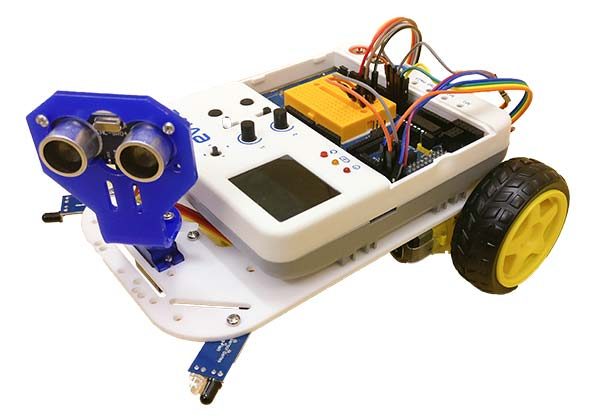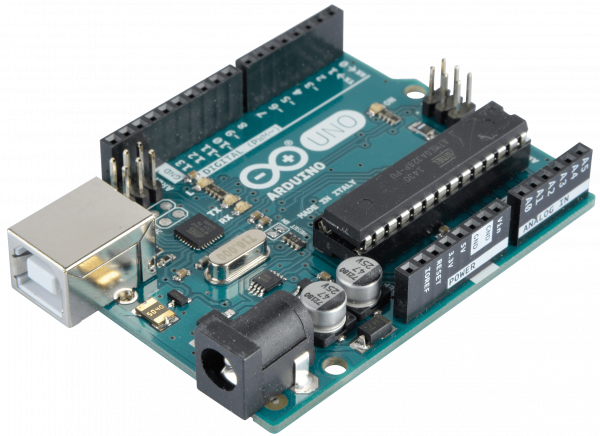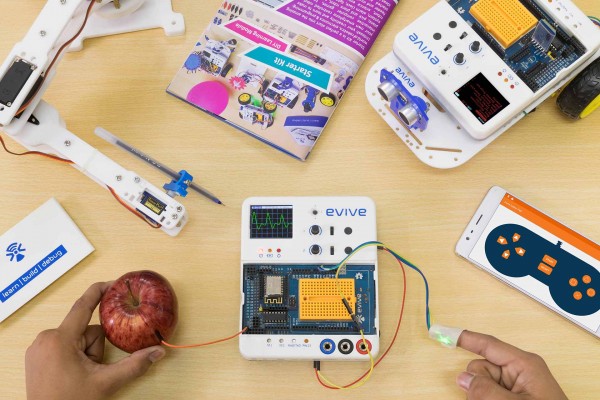What is Arduino?
Introduction
Arduino is an open-source electronics platform based on easy-to-use hardware and software. Arduino boards has two main functions which is they are able to
- Read sensor (inputs) – light on a sensor, a finger on a button, or any other easy or complex thing. Like in this Obstacle Avoiding Robot, Ultrasonic Sensors and IR Sensors give input to the evive (Based on Arduino Mega 2560).
This is an Obstacle Avoidance Robot which has an ultrasonic sensor to detect the distance of the nearest obstacle in front of it. - Output on actuators – activating a motor, turning on an LED, publishing something online. For example, in the above robot, wheels are controlled by microcontroller according to sensor inputs.
You can tell your Arduino/evive board what to do by sending a set of instructions (known as a program or a sketch) to the microcontroller on the board. To do so you use the Arduino Software (IDE).

Boards you can use for this Course
Arduino Uno
The Uno is one of the more popular boards in the Arduino family.
evive
evive is an open-source electronics platform built on Arduino Mega 2560. It has a lot of features inbuilt:
Similar to Arduino Uno, evive has all the features mentioned above.
Incoming lectures, we will teach you about Arduino. You can do the course with both the boards. It is not compulsory that you have to have an evive board with you.



